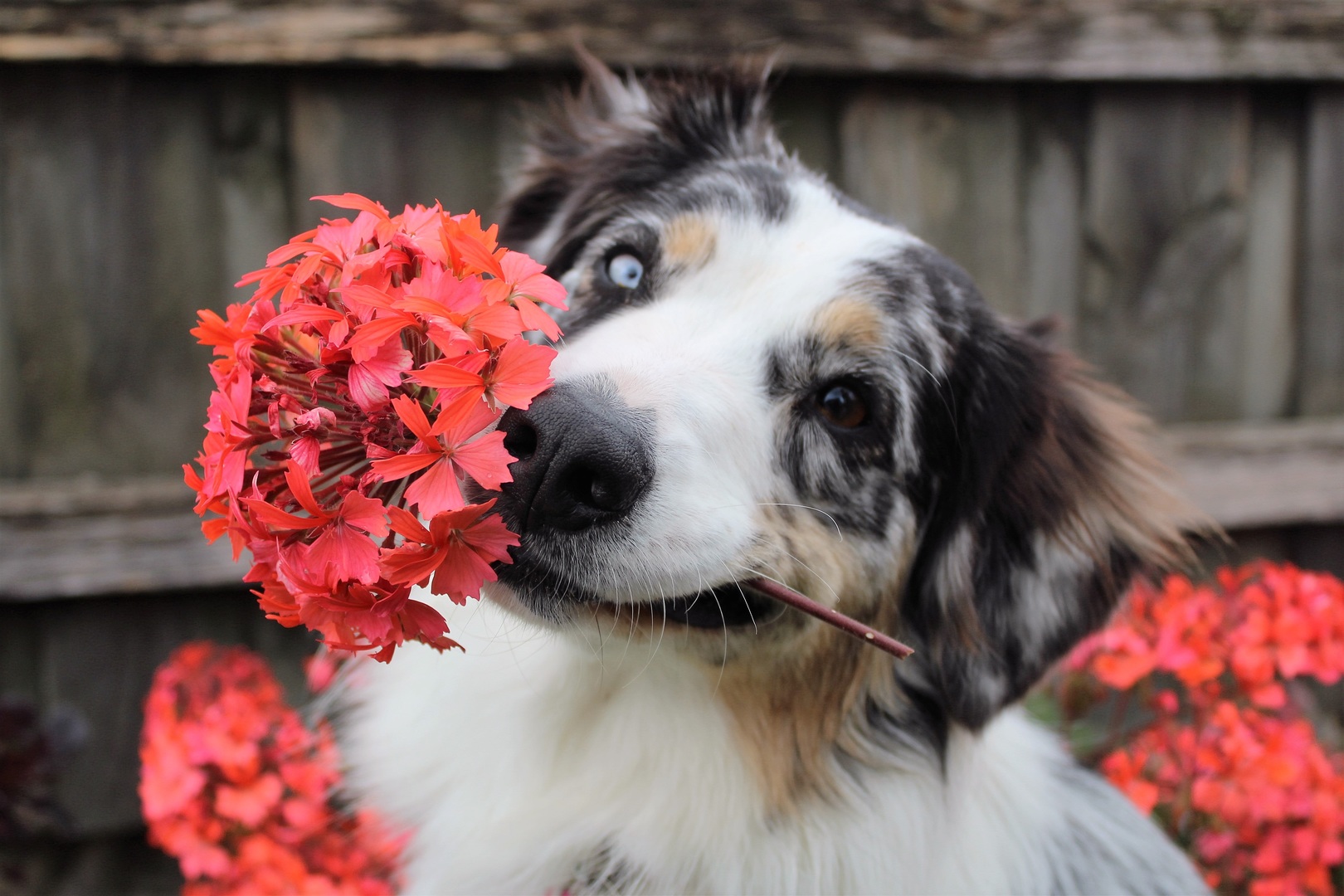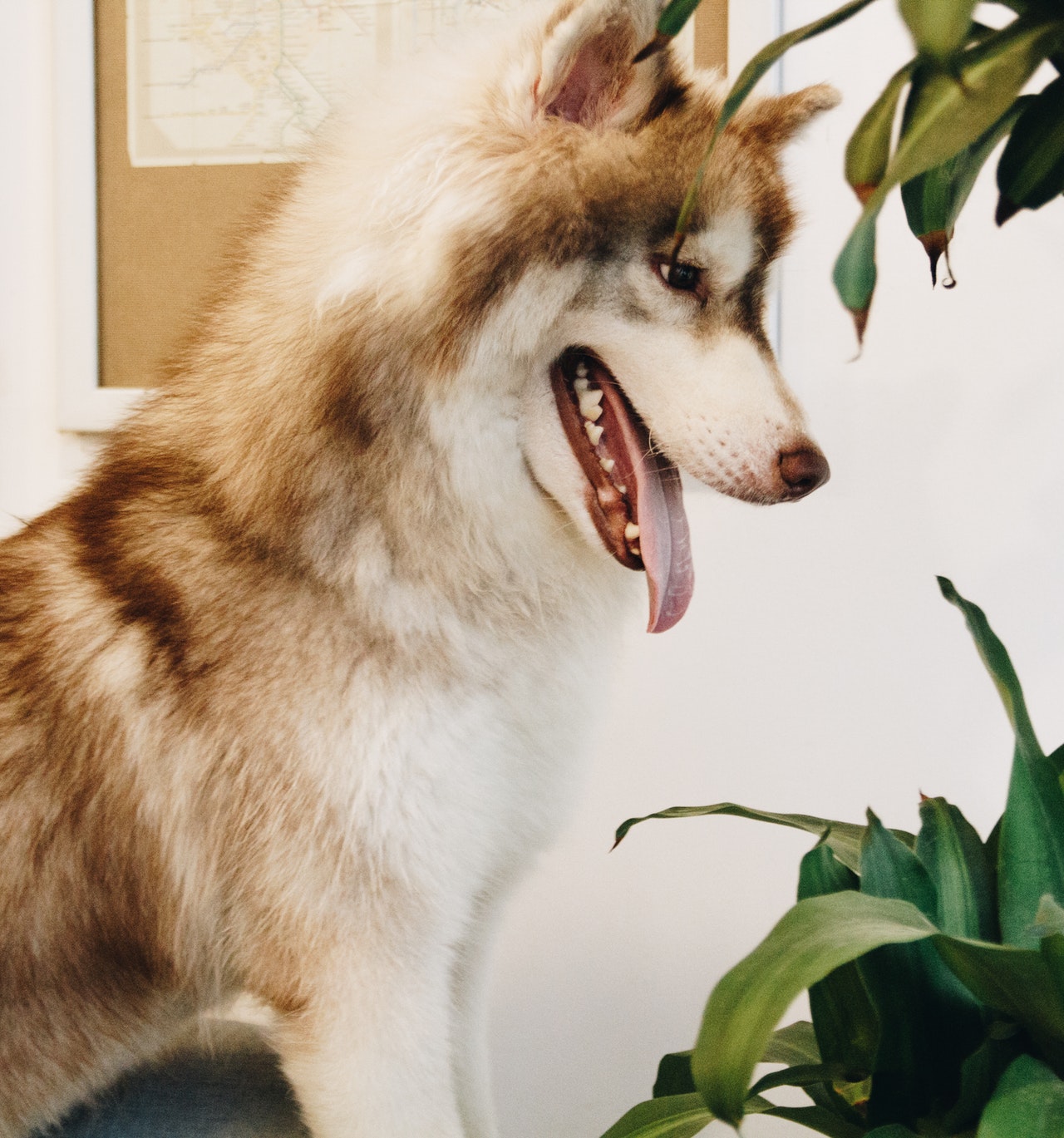12 Household plants dog owners should avoid

Sharing a home with your best four-legged friend is a dream for most dog owners, but when you also keep potted houseplants around, that dream can easily turn into a nightmare. Cats and dogs can be overly curious about plants–destroying, playing with, and sometimes even eating them.
Unfortunately, many common houseplants are dangerous for pets to consume. Knowing poisonous houseplants from harmless ones can help keep your pets safe. Symptoms of exposure to toxic indoor plants range from excessive salivation to tremors or kidney failure, so this is not to be taken lightly. Let’s talk about the deadly dozen toxic houseplants commonly kept indoors and what to do if your dog eats any of them.
1. Aloe Vera
Aloe vera is a much-celebrated healing botanical used by humans, but the green in aloe leaves contains saponin, a compound that can irritate a dog’s gastrointestinal system. If you know that your dog has eaten the leaves of an aloe plant and notice that he is drooling, vomiting, or suffering from diarrhea, it may be necessary to seek veterinary care. Generally speaking, the larger the dog, the more likely a reaction to eating a few leaves will be mild, but a small dog should be treated as soon as possible if they show any symptoms of aloe vera poisoning.
2. Asparagus Fern
Feathery and delicate, asparagus ferns are ornamental cousins of asparagus frequently found in homes. While the leaves are mildly toxic, a natural steroid, sapogenin, is concentrated in the plant’s seasonal berries. For whatever reason, some dogs find these berries irresistible and can’t seem to help themselves when it comes to eating them. The foliage and berries, when ingested, can cause skin irritation and gastrointestinal distress. If you notice blistering, redness or swelling around the mouth and nose coupled with nausea or vomiting, chances are asparagus fern is to blame. The symptoms should pass in a few hours, but if your dog is on any medications you may want to visit the vet to rule out any drug interactions.
3. Corn Plants
Originally from Africa and popular houseplants, corn plants, or Dracaena fragrans, are poisonous to dogs. The exact toxin contained in these plants is unknown, but when dogs ingest them, the results are usually not pretty. Expect vomiting, drooling, and diarrhea if your dog has eaten any part of this plant. While unpleasant, these symptoms are generally rather mild and will pass without treatment in a matter of hours.
4. Dumb Cane
Dieffenbachia, or dumb cane, is a beautiful, low-maintenance houseplant that performs well in low-light. It is also one of the most toxic plants (1) you could expose your dog to. Symptoms to dumb cane toxins begin immediately upon exposure and include frothing at the mouth, inflammation of lips and tongue, vomiting, head shaking, and sometimes pawing at the mouth. In severe cases, ingestion can be deadly. If your dog has had any exposure to dumb cane, you must seek treatment as quickly as possible. Unlike other, less toxic plants on this list, this one is simply not worth the risk and should be avoided at all costs.

5. Elephant Ears
This broad-leafed, tropical-looking plant also goes by the names of alocasia, pai, or malanga, but no matter what you call it, the leaves and stems are bad news for Fido. Coming into contact with broken stems or leaves can cause skin irritation, but ingesting will result in immediate symptoms. Excessive drooling, whining, a swollen tongue, vomiting, and pawing at the mouth are all indications of exposure. In the event that your dog chews an elephant ear, first, wash out the mouth with water and a washcloth. If you see any signs that your dog is having trouble swallowing or difficulty breathing, seek help immediately. This is yet another poisonous plant that you’ll be better off without–it’s just not worth the risk.
6. English Ivy
Attractive and low-maintenance, English ivy plants are typically spotted on desktops and windowsills where they add a touch of green. The beautiful leaves, unfortunately, contain sapogenin and polyacetylene compounds which can cause oral irritation, gastrointestinal distress, vomiting, and diarrhea in dogs that have been exposed. While rarely causing more than an unpleasant afternoon of symptoms, usually withholding food for a day and offering cooled water and ice chips is enough to help your dog find relief after ingesting small amounts of ivy.
7. Jade Plants
Beautiful and low-maintenance, also known as money plants, friendship plants, and rubber plants, jade plants are one of the most common houseplants. While the exact toxin contained in their succulent leaves is unknown, ingesting them is seriously dangerous to dogs. Symptoms of jade plant poisoning include lethargy, depression, incoordination, a slow heartbeat, and vomiting. When you take your buddy to the vet, make sure to bring a picture of the plant, which can help the doc determine your pup’s treatment.
8. Lilies
Beautiful and classic, lilies are one of the most popular cut flowers to keep in the home. They are also amongst the most toxic to dogs and should be kept out of reach at all times. True lilies– Easter lilies, stargazer lilies, and all others with the iconic bloom form– are the most dangerous of this family. However, calla lilies, peace lilies, and rain lilies are poisonous as well. Dogs have been known to dig up and ingest tubers, which are exceedingly dangerous if consumed(2). The colchicine alkaloids contained in the tubers, stalks, leaves, and blooms of lilies can cause shock, organ failure, and death. If you suspect your dog has eaten any part of a lily, get them into a veterinarian as quickly as possible.
9. Poinsettia
Frequently found in homes around the holidays, poinsettias are part of the euphorbia family, and all parts of the plant are mildly toxic if consumed(3). When broken, the stems of the poinsettia bleed a milky, white liquid that contains saponins and can cause tissue irritation upon contact. You might see your pup drooling, licking lips repeatedly, vomiting or suffering from diarrhea after coming into contact with a poinsettia. These plants are known for having fairly severe toxicity if consumed in large quantities, and pet owners are advised to seek treatment as quickly as possible after known exposure.
10. Pothos
Also known as devil’s ivy, ivy arum, taro vine, and golden pothos, every single part of this very common household plant is poisonous to dogs. Pothos contain insoluble calcium oxalate crystals, which cause immediate irritation upon contact. Symptoms range from mild to severe, but the toxins can cause long-term damage, so if you see your dog eating the leaves of this plant, seek treatment immediately.
11. Philodendron
With large, sculptural leaves, philodendrons are stylish house plants found in many American households. They contain insoluble oxalate crystals, which make them toxic to dogs. Exposure to any part of philodendron plants can cause vomiting, difficulty swallowing, pawing at the mouth, tongue swelling, and hoarse barking. The good news is that exposure to these crystals is unpleasant and is usually enough of a deterrent to stop dogs from ingesting the plant. If you see your dog eating or chewing on any plants in this family, rinse and wipe their mouths out with a washcloth and keep an eye on their symptoms. Unless symptoms are severe, recovery should only take about 24 hours.
12. Tulips
Every spring, pots of tulips get rolled out onto the shelves of stores and they make their way into homes. In truth, most seasonal bulbs such as amaryllis, daffodils, and crocuses are extremely toxic to dogs. The glycosides and alkaloids found in these bulbs and blooms are extremely detrimental if eaten, with the highest concentration of toxins found in the bulbs. Ingestion can result in abdominal pain, seizures, vomiting, and death. It is critically important to seek veterinary care immediately if you believe your dog has eaten tulip bulbs or any flowering plant bulb.
This list may be alarming, but bear in mind that pet owners can avoid any poisoning by not keeping toxic houseplants, or putting them well out of reach. There are many other plants that are poisonous to dogs, which are listed by the aspca in exhaustive detail. Always keep the number for the animal poison control center on hand, and try to populate your home with the many non-toxic houseplants that are readily available.
